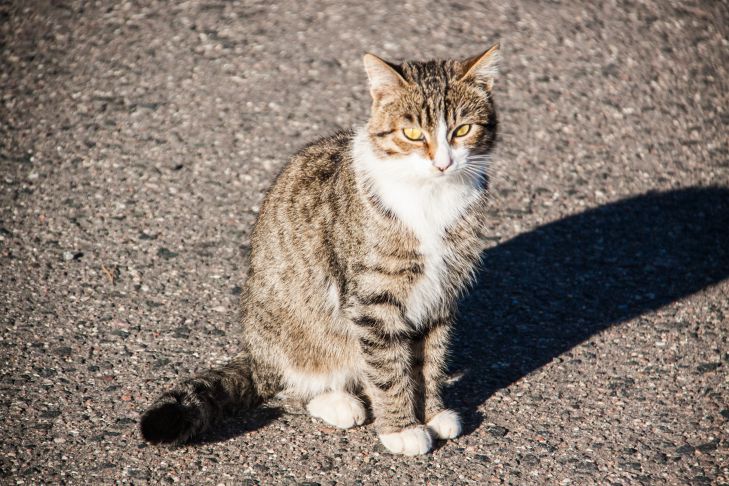Tail wagging in cats is very different from tail wagging in dogs. Cats may wag their tails while walking, tap their tails while lying down, or raise their tails when they see a person.
Cats have their own unique body language. If you pay close attention to a cat, you'll soon learn exactly what it's trying to say every time it wags its tail.
Overexcited or irritated
Sometimes a cat will wag its tail while lying down, which can seem especially odd. Often, it's a sign that the cat is feeling a little overexcited, experts say .

If she is lying down or sitting quietly, she may wag her tail a little after her owner has petted her. This tail wagging may mean that she is feeling a little irritated or overexcited and wants to be left alone for a while.
Sometimes it can also mean that the cat has a lot of energy, and although it was lying quietly, it is now ready to play. Now is the time to remove your hand, stop petting it, and take the toy. Otherwise, the toy will become your hand itself.
Always on guard (even when sleeping)
It happens that a cat is in a deep sleep and twitches its tail. Just as a person's muscles may twitch a little while he sleeps, a cat's tail may twitch too.
In other cases, the pet may not sleep so deeply. If you call the cat and it does not come, but slowly begins to wag its tail, then most likely it has woken up and is trying to decide whether it wants to get up. A gentle wag of the tail indicates that the cat hears the person and knows that he is there.
Helps maintain balance while hunting
Cats also wag their tails when hunting. This often happens when they are watching birds from a window and are concentrating on their prey. The cat may also make “clicking” sounds when watching birds, and you may even see their fur swaying slightly.
A cat may flick its tail like this when it is hunting for insects in the house and is about to pounce on its prey. The tail can help it maintain balance and agility, so flicking it while hunting helps it stay ready to pounce.
In response to the threat
When a cat feels threatened or is suddenly startled, its tail will puff up until it is twice as wide as usual or even wider. It may also fluff up the rest of its fur in an attempt to make itself appear larger and more menacing.
Often a cat will do this when it sees a strange cat and is preparing for a fight, but it may also do this when it hears a frightening sound.
Happy and confident
Dogs are known for wagging their tails when they are happy, but what about cats? While cats don't have the same excited, happy tail wagging that dogs are known for, they can certainly wag their tails when they are happy.
When a cat feels happy and confident, it will walk around the house with its tail held high. Sometimes it will also curl the tip of its tail slightly, twitch, or wag it. This is a subtle way of letting a person know that it is happy and content.
Cats may also wag their tails more vigorously when they are playing, waving them from side to side. A cat will do this when chasing a feather toy that a person is holding, or when two cats are playing. This is a good way to tell if cats are pretending to fight or are serious. If a cat feels threatened, it will likely raise its tail. When it is just playing, it will likely wave its tail.
